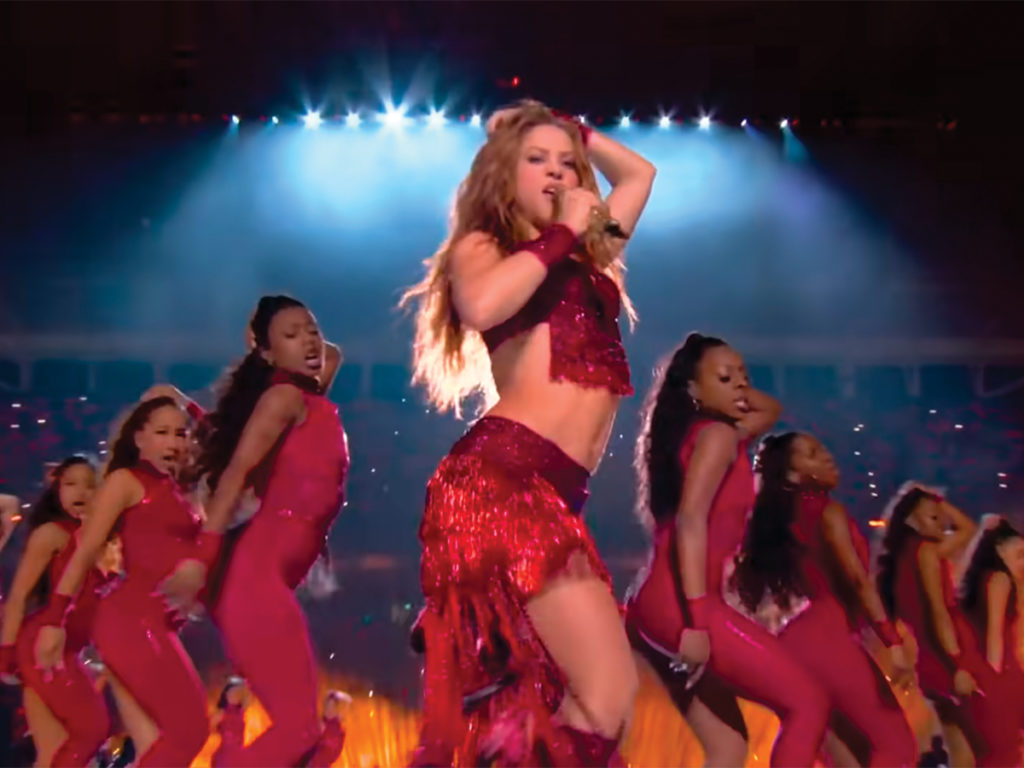
The 54th annual Super Bowl featured global sensations Shakira and Jennifer Lopez for the halftime show. Although both performed iconic songs, their halftime performance garnered much attention from the public. Many were concerned over whether or not their performances objectified women or empowered them. While the two performers might have had good intentions in their performance, their main focus seemed to not be women empowerment as they advertised it to be.
Rather than focusing solely on empowering women, both performers chose to express their Latin culture instead. Shakira is already widely known for her Colombian and Lebanese background and music. Her performance was nothing short of impressive, weaving her Colombian and Arabic heritage together at one of the most American sporting events in history.
Throughout this performance, Shakira wore figure-hugging articles of clothing. Past performers have worn revealing clothing in order to stand out during their performance. Last year, for instance, Adam Levine took his shirt off during his performance. This year, those who tuned into the Super Bowl got explicit camera shots of Shakira’s rear end and Jennifer Lopez’s suggestive pole dancing.
The show continued with Jennifer Lopez; the highlight of her performance was a pole dance routine that commanded the audience’s attention. Though it requires superb upper body strength, pole dancing is not a widely respected practice. Although some may enjoy pole dancing as a hobby, to others it’s their main form of income — to fulfill someone’s sexual fantasies in order to get easy cash. In other words, it is not the best way to represent women as empowered individuals; in fact, one could argue it does more to objectify them.
Furthermore, their suggestive hip thrusts and sexual movements on stage debases their intentions of empowering women. A better example of female empowerment would be someone like Katie Sowers, the first female football coach to coach a Super Bowl. Football is a sport that is highly concentrated with male coaches and players. Sowers had shared that people would tell her to do something that is more fit for a female. However, she stayed the course and broke gender norms by following her passion and becoming the first female to coach for the 49ers at this year’s Super Bowl.
Shakira and Lopez simply performed another halftime show, during which they wore shiny, revealing clothes and expressed themselves as singers, not as advocates for women empowerment. Admittedly, the performances themselves and the song choices were entertaining, but it was clear that positive female representation wasn’t the goal. Aside from the fact they are two women of color, the performance did little to empower other women, instead choosing to express their ethnic backgrounds.
Both Shakira’s and Jennifer Lopez’s performances were strong examples of cultural representation. However, it seems as though female empowerment was not part of their agenda. It’s one thing to represent your country, but it’s another thing to inspire other women to pursue their true passions. Their performance displayed their strong nationalism and shed light on political issues, such as the children detained at the U.S.-Mexico border. Although Shakira and Lopez’s performance didn’t specifically target female empowerment, they showcased one of Super Bowl’s most memorable halftime shows, showed pride in their cultural identity and raised awareness to important current issues.








